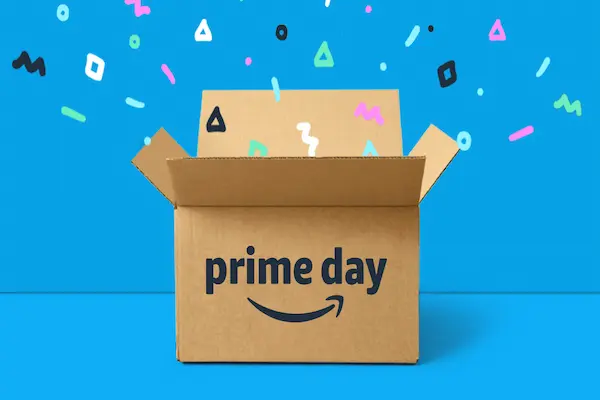Prime Day deals: Save More in 2025
Ready to truly save on Prime Day deals? Learn how to prepare, check prices, accumulate coupons.
Anúncios
And filter deals to spend less and get more.
Amazon Prime Day 2025: How Shoppers Can Actually Save More
Prime Day is exciting, loud, and full of flashing banners—but real savings come from strategy, not impulse.
This guide shows exactly how to prepare, filter, and verify Prime Day deals so you spend less and get what you actually need.
You will learn practical steps to avoid fake discounts, stack legit offers, and keep your budget safe while still enjoying the fun.
The goal is simple.
Turn Prime Day from a noisy sales event into a calm, controlled shopping win for your household.
We are not affiliated with or controlled by Amazon or any other platform citado.
This content is purely informational to help you shop more safely and confidently.
What Prime Day really is—and what it is not
Prime Day is a members-only sales period with thousands of limited-time discounts across categories like tech, home, fashion, beauty, and essentials.
The best offers are often time-boxed Lightning Deals or “Deal of the Day” features with limited inventory.
Not every price is a real bargain, and many “was” prices compare against inflated list prices, not the true recent selling price.
That means you need a clear plan, a shortlist, and tools to verify price history before you click buy.
If you treat Prime Day like a treasure hunt with rules instead of a race, you’ll avoid buyer’s remorse and keep your budget intact.
Prime Day deals start before you think
Warm-up promotions, invite-only deals, and brand-led previews often begin days ahead of the main event.
Add your targets to a wishlist early, then watch for early drops that quietly match the final price.
Some brands mirror Prime Day pricing on their own sites to avoid marketplace fees and protect warranty policies.
If you see a truly identical product, compare total out-the-door costs including tax, shipping, and any store cash you will actually use.

Build your Prime Day shortlist the smart way
Start with needs, not wants, by listing the exact products you plan to buy, including sizes, capacities, model numbers, and color preferences.
Set a realistic target price for each item based on the lowest recent price you’ve seen, not the MSRP.
Add at least one acceptable alternative for every big-ticket product to keep options open when inventory runs out.
Prioritize evergreen essentials and devices with long update support over novelty purchases that lose value quickly.
How to verify real discounts on Prime Day deals
Use price-history tools that chart actual selling prices over time to confirm whether a “deal” is truly lower than recent averages.
Look for charts that show the 90-day and 180-day lows, not just a single spike.
If today’s offer is within 5% of the all-time low for the model you want, that is usually a genuine buy signal.
If the current price only matches common weekend promos, keep scrolling and save your budget for something better.
Filters that separate noise from value on Prime Day deals
Filter by discount percentage but ignore anything under 15% for commodity items and under 25% for seasonal or fashion.
Toggle “Prime” and “Ships from Amazon” to reduce third-party listing risks if you value fast returns and consistent packaging.
Use category filters like “4 stars & up” to eliminate low-quality listings that waste time.
Sort by “Newest Arrivals” inside your target brand if you prefer current-generation products with longer support windows.
Stacking the right way: coupons, credits, and card perks
Many deals allow a digital coupon that must be checked on the product page to apply at checkout.
Clip those coupons first, then confirm the green confirmation flag appears in cart before you proceed.
Combine eligible store credits, gift card balances, or trade-in credits to reduce your out-of-pocket cost.
If your card offers rotating category cash back or a time-limited Prime Day rebate, calculate the final price after statement credits—not before.
Lightning Deals: race calmly, not recklessly
Lightning Deals move fast because quantities are capped and waitlists fill quickly.
Turn on deal alerts for your wishlist items and use app notifications so you do not live-refresh pages all day.
If you join a waitlist, keep your device nearby because you have a short window to check out if a slot opens.
Never buy an unplanned item just because the timer is red—lack of planning is how budgets get wrecked.
Invite-Only deals and how to use them
Invite-Only deals let you request access to high-demand discounts before the event begins.
Apply for the items on your shortlist rather than every flashy product you see.
If you receive an invitation, check final specs before purchasing to avoid model mismatches or “refreshed” generations with minor changes.
If you do not get the invite, be ready with your Plan B alternative model at a similar price tier.
Trade-in, bundle, and “Subscribe & Save” stacks
If you are upgrading a device, check trade-in values that may generate Amazon credit in addition to the Prime Day discount.
Bundles that include chargers, cases, or extended warranties can beat standalone prices if you need those add-ons anyway.
For consumables, “Subscribe & Save” can stack with Prime Day discounts on the first delivery, then revert to your chosen cadence later.
Always set a reminder to review subscriptions so you do not overstock items you use slowly.
Warehouse, Renewed, and Open-Box opportunities
Amazon Warehouse often marks down like-new or very good condition items that were opened and returned.
Check the condition notes carefully and confirm the return window before you buy.
Amazon Renewed products are professionally inspected and come with a limited guarantee, which may offer better value than chasing a brand-new unit at a small discount.
For big purchases, weigh the savings against warranty differences and potential longevity concerns.
Reading listings like a pro during Prime Day
Match the exact model number, year, and generation to ensure you are not buying an older variant with fewer updates.
Confirm the voltage, region compatibility, and band support for electronics to avoid returns and restocking fees.
Check what is actually in the box—many devices no longer include chargers, and those add-ons affect the real price.
Scan recent Q&A and reviews for patterns around defects, firmware bugs, or missing features.
Timing your cart: when to check out and when to wait
Buy immediately for Lightning Deals and low-quantity items that hit an all-time low.
Wait for the second wave or late-event repricing on items with deep inventory and strong competition.
If a desired product drops slightly but not enough, add it to cart and monitor—it may dip further before the event ends.
Never hold a limited-time credit past its expiration in hopes of a better price that may never come.
Prime membership options and cost control
If you rarely use expedited shipping or streaming, calculate whether a monthly membership is smarter than an annual plan for the event window.
Students and qualifying assistance recipients may have discounted membership options, which can lower the cost of entry.
Set a cancellation reminder if you do not plan to keep Prime after the event.
Use household sharing features to extend benefits across family members without paying twice.
Data-safe shopping on Prime Day
Enable two-factor authentication on your account before the event to reduce fraud risk.
Avoid logging in on public Wi-Fi and never store card details on shared devices.
Do not respond to texts or emails claiming “exclusive Prime Day access” that require you to re-enter credentials.
Always navigate directly to the platform app or official site rather than clicking suspicious links.
Returns, warranties, and buyer protection
Check each item’s return window because it can vary by category and seller.
Keep packaging until you confirm the product works as expected to simplify returns.
Register devices and appliances immediately to activate manufacturer warranties and firmware updates.
Save digital invoices and chat transcripts so you have proof if something goes wrong.
Category-by-category tactics for Prime Day deals
Tech and electronics often drop hardest during the event, but verify model-year differences to avoid paying for old chips or shorter update promises.
Home and kitchen gear frequently offers value in bundles, so compare a set price to the sum of parts before deciding.
Fashion and footwear discounts can look big but rotate often, so be honest about fit risks and return fees.
Beauty and personal care shine with multi-pack coupons and Subscribe & Save, which stack especially well for brands you already use.
“Too good to be true” red flags to avoid
If a listing copy is inconsistent, generic, or stuffed with mismatched brand names, slow down and verify.
Steep discounts on third-party electronics with no clear warranty should trigger extra caution.
If accessories are missing, the price you pay after buying add-ons may exceed a better boxed model.
When reviews cluster around the same date with vague praise, assume manipulation and keep moving.
Budget guardrails that keep Prime Day fun
Set a firm total budget and a per-category cap before the event starts.
Use a simple note or spreadsheet to track “planned,” “added,” and “purchased” items in real time.
If you buy an unplanned item, remove something else to maintain your total limit.
Celebrate the wins, but never let FOMO rewrite your financial priorities.
How to build a “Price-Ready” product page workflow
Open the product page and confirm model, specs, color, and seller first.
Check price-history trends for the last 90 to 180 days and identify the all-time low.
Apply any available coupon, confirm it in cart, and calculate final price after credits and rewards.
Skim the latest reviews and Q&A for deal-breaking issues, then decide with confidence.
“Prime Day deals” for small businesses and side hustles
If you run a home office or sell online, look for stackable offers on label printers, storage, shipping supplies, and cameras.
Cloud storage, subscriptions, and SaaS tools may also run parallel promos—compare total annual cost after credits.
Prioritize equipment that directly increases output or reduces recurring expenses.
Avoid buying niche tools that will sit unused after the adrenaline fades.
When not to buy on Prime Day
If the discount is only five or ten dollars on a mid-range purchase, waiting for seasonal sales may be smarter.
When a product line is due for a refresh, the deepest cuts often appear during clearance windows, not the headline event.
If you are upgrading purely for novelty, your time and money may deliver more joy elsewhere.
Saying “pass” can be the most profitable move of the day.
How to handle post-purchase dips
Prices can continue to move during the event, and some items see late-stage drops.
If an item you just purchased falls noticeably, check the store’s price-adjustment or return-and-rebuy policy within the return window.
Keep packaging and watch your order page for hidden credits or coupon re-issues.
Be polite with support and focus on clear, factual requests to improve your chances.
Prime Day deals: Ethical, inclusive, and mindful shopping
Build a list that reflects your real needs and goals, not just the loudest ads.
Consider donating or reselling working devices you replace to reduce waste.
Support brands with strong repairability, software support, and transparent sustainability practices.
Savings feel better when they align with your values and your budget.
Transparency and independence
This article is independent and purely informational.
We have no relationship with and no control over Amazon, sellers, or any third parties mentioned.
Always verify details on the official product pages during checkout.
Your purchase decisions are yours, and we encourage you to choose what fits your needs and budget.
Prime Day deals: Final checklist before you buy
Confirm exact model number, generation, and specs.
Verify price history against 90-day and 180-day lows.
Clip all coupons and confirm in cart.
Calculate final price after credits and rewards.
Check return window and warranty steps.
Review the latest Q&A and top reviews.
Stick to your budget and your shortlist.
Conclusion: Make Prime Day serve your goals
Prime Day can be a smart way to upgrade your home, your tech, and your everyday essentials.
With a clear shortlist, verified prices, and stackable savings, you protect your wallet while getting more of what matters.
Remember that the best deal is the one that fits your life, not just your cart.
Shop intentionally, stay calm, and let strategy—rather than FOMO—do the heavy lifting.


